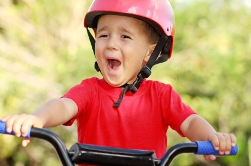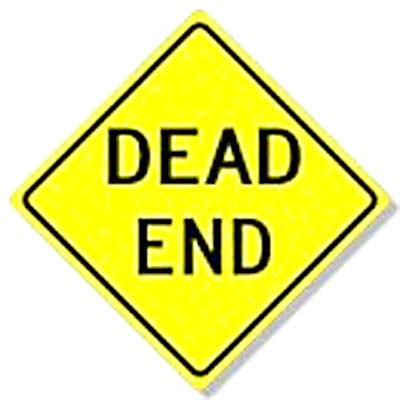CLICK HERE for Gift Certificates!
preparing for a trip to safety city
The Pedestrian Safety Program at Safety City is designed to make children aware of street traffic and provides them with strategies on crossing safely. The program uses signs (visual), discussion (audible) and a “hands on approach” (practical) to learning how to be safe when walking, biking and playing. Our primary focus is on pedestrian safety.
 To prepare your class and to make the most of your trip to Safety City we have provided some suggestions you may want to use with your current safety program.
To prepare your class and to make the most of your trip to Safety City we have provided some suggestions you may want to use with your current safety program.
- Dedicate the month/week of your trip as “Safety Awareness”. Have activities, games, books and discussions towards safety.
- Have the children look out for street signs they see on the way to school/home. Have them draw a picture of the sign and discuss what they think the sign means.
- The day before your trip, have the children brainstorm “What are “road” dangers when walking?” (speeding cars, running out without looking, etc)
- Introduce the word Pedestrian. Did you know that the word pedestrian comes from the word “Pede” meaning foot? Have the children come up with some ideas of what they think the word means?
- On the day of the trip, explain to the children that they will be learning many new things and having fun. Safety City is an excellent place for your students to practice crossing streets safely and independently. Encourage the students to practice, practice, and practice!
The day after your trip write a class story “On our trip to Safety City we…” As a large group have them continue the story. Type the story and make copies for each child so that they may illustrate their favorite part of the trip or what they’ve learned. This makes a great page for their memory book and reinforces the learning experience!
preparing your volunteers
Volunteers are a great help while the children are practicing “safe crossing”. Encourage your volunteers to choose a corner or intersection and provide the children with reminders as needed.
Remember we are the children’s best role models. All adults should always follow the “safe crossing rules” at Safety City.
Please remind your volunteers to turn their cell phones off.
things to bring
Each child requires his/her own helmet.
Safety City is a program that requires students to go outside. Students should be dressed appropriately for the quickly changing Calgary weather.
Nametags would be appreciated.
ENJOY YOUR VISIT AT SAFETY CITY!!!
educational resources
Click on images for printable version
 |
 |
 |
 |
 |
 |
 |
 |
 |
 |
 |
 |
 |
 |
 |
 |
 |
 |
 |
 |
traffic control lights
Traffic control lights help make for smooth transitions at intersections, etc.
Red lights mean stop. A right turn is permitted after a full stop unless otherwise posted. A left turn onto a one way street is permitted from a one-way street after coming to a complete stop unless otherwise posted.
Yellow signals that it is time to slow down and stop. A yellow light is a means of safely clearing an intersection.
Green means go when it is safe to do so. Remember, pedestrians crossing on the green have the right-of-way.
When approaching an intersection with a green arrow and a red light, you may turn only in the direction of the green arrow without stopping. Yield the right-of-way to all pedestrians and vehicles in the intersection.
| Flashing Lights Flashing Red - Stop. Proceed only when it is safe to do so. Flashing Yellow - Slow down. Proceed with caution. When flashing yellow lights are used together with a sign which indicates a pedestrian hazard, such as a school or playground area or pedestrian crosswalks, reduce your speed to 30 km/h. Be prepared to stop and yield right-of way to any pedestrians on the roadway. Keep your speed reduced until you are clear of the area. Flashing Green - You may proceed. Opposing traffic is facing a red signal. Flashing Arrow - traffic moving in the direction of the arrow may proceed if the way is clear. |
 |
Pedestrian-School This sign warns that you are approaching a school zone. Slow down, drive with extra caution and watch for children. This sign may also have a "Maximum Speed" or "km/h During School Days" tab underneath. Generally, the speed limit is 30 km/h for both school and playground zones in urban areas. In rural areas, the speed limit in these zones is 40 km/h. School zones are usually in effect every day that school is in session. Playground zones operate from 8:30 a.m. to one hour after sunset every day of the year. These limits can vary so drivers should watch for posted signs. |
 |
 |
Speed Limits Speed limits do not indicate the speed you should travel. Speed limits are the maximum speeds permitted if conditions are favourable. Speed limits are posted in kilometres per hour. The speed limit is 50 km/h on urban roads and 80 km/h in rural areas unless otherwise posted. Remember to slow down in bad weather, at night and when driving on poorly lit roadways. |
Did you know....
According to Alberta Centre For Injury
- On average at least three pedestrians are involved in collisions daily in Alberta
- In 1997, pedestrians between the ages of 15 to 24 were most at risk for being injured.
- Pedestrian injuries are most likely to occur during the evening rush hour between 3:00 pm and 7:00 pm
- Pedestrians violate the “Don’t Walk” signal about 50% of the time. Jaywalking is also a common pedestrian error.
- Most pedestrians injuries involving children younger than age five occur within one block of the child’s home. Toddler are most likely to be injured while playing in their driveway (or sidewalk) when drivers are backing up vehicles. Preschooler tend to be injured while crossing “mid-block” on residential streets.
- Most pedestrians are involved in accident from left turning vehicles.

